| |
License Comparison There are subscription, perpetual licenses of OSForensics available.
|
License
|
Perpetual
|
Subscription
|
|
License Validity
|
Software never expires
|
Software valid for length of subscription
|
|
Major and Minor Upgrades
|
Yes, for length of
purchased support period
|
Yes, for length of
subscription
|
|
Support and Maintenance
|
Phone, E-mail, Forum support for length
|
Phone, E-mail, Forum support
|
|
|
of purchased support period
|
|
|
Installs per License
|
Allows for 2 machine
installs
|
Allows for 2 machine
installs
|
|
|
(typically a lab machine
and a laptop)
|
(typically a lab machine
and a laptop)
|
|
|
and 1 USB install, all
controlled by the same user
|
and 1 USB install, all
controlled by the same user
|
|
Auto-Renewal
|
No
|
Yes, if paying by credit card.
|
|
|
OSForensics lets you extract forensic evidence from computers quickly with high performance file searches and indexing. Identify suspicious files and activity with hash matching, drive signature comparisons, e-mails, memory and binary data. Manage your digital investigation and create reports from collected forensic data.
Digital investigations for a new era For Windows Identify suspicious files and activity Extract evidence from computers quickly Manage your investigation
|
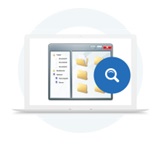
|
Search
files fast
OSF
provides one of the fastest and most powerful ways to locate files on a
Windows computer or Forensic image.
Search
within the contents of files with the use of our acclaimed indexing engine
providing industry leading relevance ranking, date range searching, exact
phrase matching, “Google-like” context results and more.
|
|
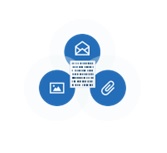
|
Extensive
file type support
Investigate
and search within hundreds of file types including Office and Acrobat
documents, image files (with OCR), e-mails</a> (Outlook, Thunderbird,
Mozilla and more), attachments, ZIP files, and even binary files and
unallocated clusters.
|
|
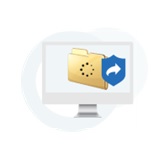
|
Recover
deleted evidence
Search
and recover files that a user may have attempted to destroy or have been
removed from the Recycle Bin.
|
|
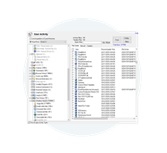
|
Uncover
user activity
Scan
the computer for evidence of recent activity, including accessed websites,
USB drives that have been connected, wireless networks, recent downloads,
website logins and website passwords.
|
|
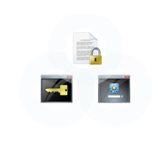
|
Password
recovery
OSF
provide powerful tools to uncover and crack passwords on a live system or
forensic image.
These
include:
- Web
site logins and passwords (used in Chrome, Edge, IE, Firefox and Opera)
- Outlook
and Windows Live passwords
- Saved
Wifi passwords
- Windows
autologon password
- Windows
and other Microsoft product keys
- Ports
(Serial/Parallel)
- Network
adapters
- Physical
and optical drives
- Bitlocker
detection
OSF
also provide tools to crack hashes with the use of rainbow tables, and
dictionary attacks.
|
|
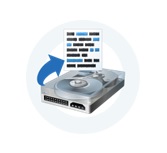
|
Reveal
hidden areas on a hard disk
OSF
can expose the HPA and DCO hidden areas of a hard disk which can be used for
malicious intent, including hiding illegal data.
|
|
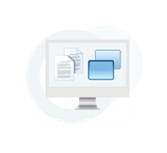
|
Browse
Volume Shadow copies
Use
OSF to access Volume Shadow Copies. This allows you to look at how a disk
appeared at a point of in time in the past and see what has changed. Discover
changes to files and even view deleted files.
|
System requirements
Win 7, Win 8, Win 10, Win 11 Windows Server 2012, 2016, 2019, 2022 64-bit support, 32-bit deprecated Minimum 2GB of RAM. (16GB+ recommended) 500MB of free disk space, or can be run from USB drive
Recommended System Requirements When it comes to setting up a system for OSForensics, there is a huge range of PC hardware on the market. Below are some suggested guidelines, but many other setups will also work fine.
Bare Minimum Hardware:
Suggested mid range cost effective hardware for lab machine: 32GB DDR4 or DDR5 RAM 64bit x86 CPU released in last 3 years with 6+ cores (e.g. Intel i5-12600K) Win11 2TB Boot & data drive. M2 NVME SSD (e.g. Samsung 980 PRO M.2 PCI-E Gen4 2TB) Optional ‘cold’ storage (e.g. Seagate Ironwolf 10TB HDD) Video card (e.g. nVidia 3060) Power supply Gold class 650W.
High end workstation: Off the shelf solutions: PowerEdge T440 Tower Server, or HPE ML350 Gen11 64GB+ ECC DDR5 RAM Xeon CPU with 10+ cores (Gen11 or later) Win11 4TB Boot and data drive. M2 NVME SSD (e.g. Samsung 980 PRO M.2 PCI-E Gen4 4TB) 4 x 8TB SATA SSD storage. (e.g. Samsung 870 QVO 2.5in SATA SSD 8TB) Optional RAID 0 data mirroring on SSD storage Video card: nVidia 4080 (if password cracking is envisaged, otherwise 3060 class) Power supply Gold class 850W+.
|

